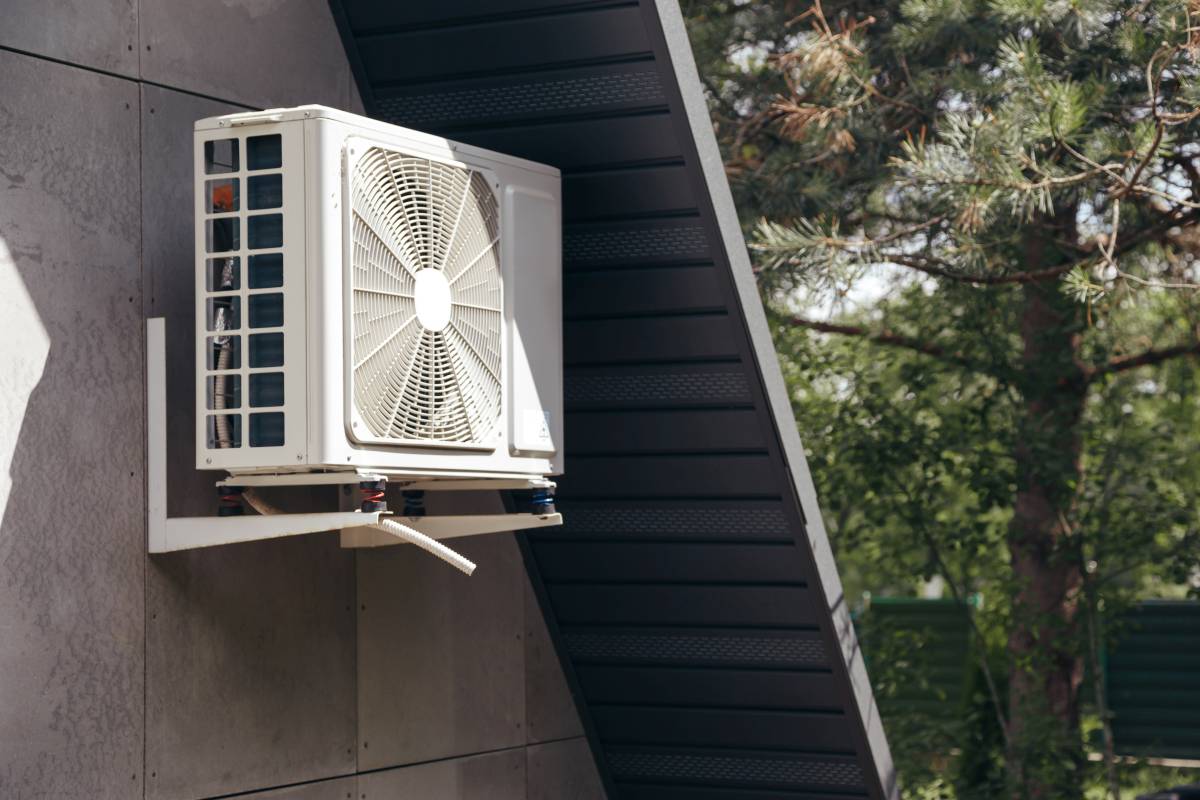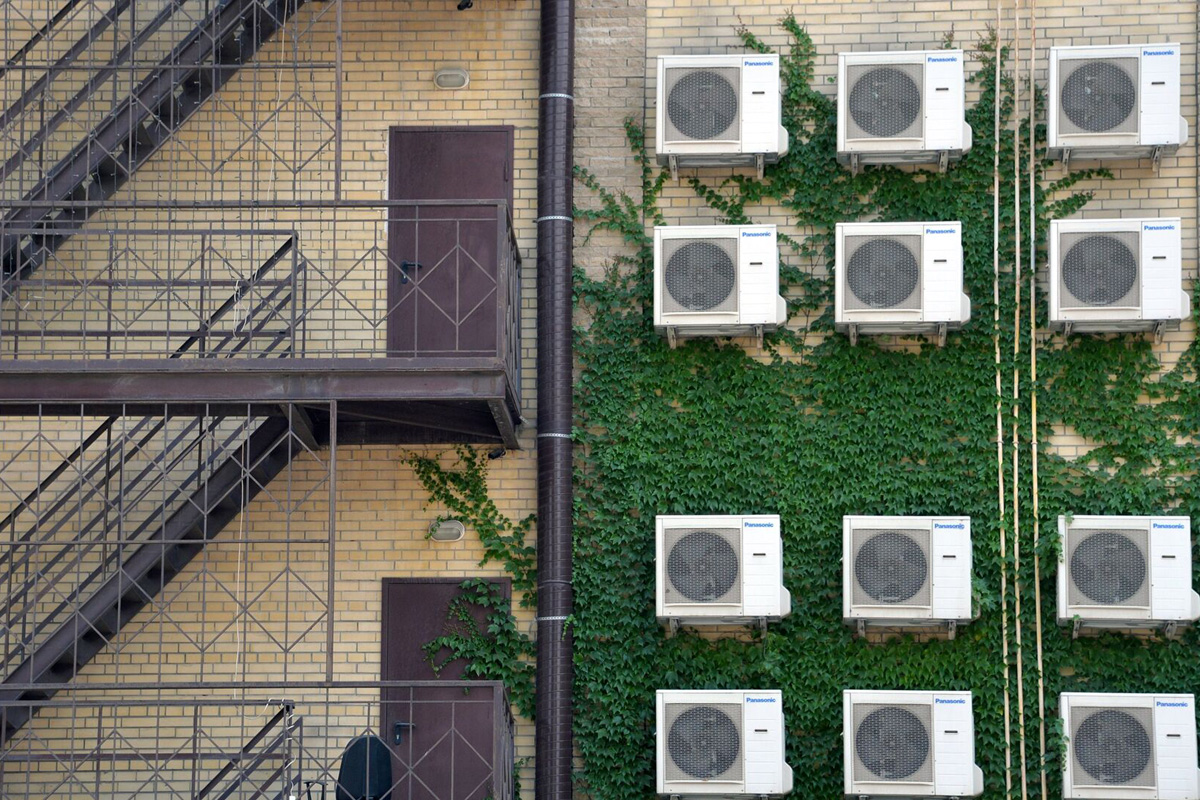An expert from Millennials Abogados details the legal implications and exceptions contained in the regulations that affect millions of neighbourhood communities.
The installation of air conditioning units on building façades is expressly prohibited under the Horizontal Property Law.
The installation of air conditioning units on building façades is expressly prohibited under the Horizontal Property Law, as confirmed by the Official State Gazette. This regulation, which affects millions of homeowners’ associations in Spain, prevents residents from placing these devices on common elements without proper authorisation, especially during the summer months when demand increases considerably.
With the arrival of summer 2025 and rising temperatures, many Spaniards are looking for solutions to cool their homes. However, the legislation is clear regarding the limitations that exist for the installation of this equipment. Article 7 of the Horizontal Property Law specifies that ‘the owner of each flat or premises may modify the architectural elements, installations or services of the same when this does not undermine or alter the safety of the building, its general structure, its configuration or external condition’, adding that it may not prejudice ‘the rights of another owner, and such works must be reported in advance to the representative of the community’.
This legal framework also establishes that ‘no alterations may be made to the rest of the property and if urgent repairs are necessary, the administrator must be notified without delay’. These legal provisions considerably limit the possibilities of installing air conditioning systems in common areas without the explicit consent of the community.
What exactly does this prohibition mean for owners?
An expert from Millennials Abogados has been categorical in answering the question of whether a neighbour can install an air conditioning unit on the façade of the building. Through the TikTok platform, the lawyer has stated: ‘The answer is no.’ This refusal is based on the fact that, in order to carry out such an installation, prior authorisation from the owners’ association is required, as established by current regulations.
The solicitor explained the legal basis for this prohibition, pointing out that ‘Article 7 of the Horizontal Property Law prohibits owners from making any alterations, whether to common or private elements, as long as they alter the aesthetics of the building.’ This restriction seeks to preserve architectural harmony and prevent unilateral modifications that affect the building as a whole, thus protecting collective interests over individual needs.
Exceptions provided for in the legislation
However, the regulations provide for certain exceptions to this general prohibition. The expert from Millennials Abogados clarifies that ‘this prohibition will have exceptions as long as your device is to be installed in a private area that does not alter the common elements of the owners’ association.’ This means that owners can install air conditioning equipment in private spaces, such as terraces or patios for exclusive use, as long as they do not affect common elements or alter the overall aesthetics of the building.
These exceptions allow for some flexibility in the application of the rule, recognising the right of owners to improve their living conditions within the limits imposed by the condominium. However, even in these cases, it is advisable to inform the community in advance of the installation to avoid possible neighbourhood conflicts or subsequent complaints.
Consequences of non-compliance with the regulations
Installing air conditioning equipment on the façade without the proper authorisation can have various legal consequences for the offending owner. The residents’ association is entitled to demand the immediate removal of the equipment and may even take legal action if the owner refuses to comply with the provisions of the Condominium Law.
These actions may result in legal proceedings which, in addition to forcing the removal of the equipment, could lead to financial penalties and the obligation to bear the costs of repairing any damage caused to common elements. Recent case law has been consistent in upholding the rights of communities against unauthorised alterations to façades, considering them to be essential elements of the exterior configuration of the building.
Legal alternatives for the installation of air conditioning
Given these restrictions, owners have several alternatives for air conditioning their homes without contravening the regulations. One option is to formally request authorisation from the owners’ association, submitting a detailed project that minimises the visual and technical impact on the façade. Many communities approve these installations when they are carried out in an orderly manner and in accordance with common aesthetic criteria.
Another alternative is portable or split air conditioning systems that do not require outdoor units on façades. There are also solutions such as ducted air conditioning or VRV (Variable Refrigerant Volume) systems that allow outdoor units to be located in less visible areas such as roofs or interior courtyards, thus complying with regulations without sacrificing thermal comfort.
The Horizontal Property Law and its regulation of common elements
The Horizontal Property Law, which was last significantly updated in 2023, regulates the legal regime for homeowners’ associations in Spain. This regulation defines common elements as those parts of the building that are necessary for its proper use and enjoyment, expressly including façades among these collectively owned elements.
The spirit of this law seeks to balance the individual rights of owners with the collective interests of the community, establishing decision-making mechanisms and specific requirements for modifying common elements. For any substantial alteration, the agreement of the owners’ meeting with qualified majorities is required, which ensures that decisions on the image and configuration of the building are taken by consensus.

How to correctly request installation from the community?
If an owner wishes to install air conditioning equipment that affects common elements, they must follow a formal procedure. The first step is to draw up a detailed proposal that includes the technical characteristics of the equipment, its exact location and the visual impact it will have on the façade of the building. This request must be submitted to the president or administrator of the community for inclusion on the agenda of the next meeting.
During the meeting, the owner will have the opportunity to present their project and respond to any questions or objections. Depending on the nature of the installation, approval will require different majorities as established by law: a simple majority for minor alterations or three-fifths for more significant modifications. Once authorisation has been obtained, it is advisable to document it in writing and include it in the corresponding minutes.
Current trends in building regulations
New trends in architecture and energy efficiency are influencing the interpretation and application of the Horizontal Property Law. Newly constructed buildings often incorporate specific areas and pre-installations for air conditioning equipment in their designs, thus facilitating their subsequent installation without affecting the aesthetics or common elements.
Likewise, many communities are adopting internal regulations that specifically regulate the installation of this equipment, establishing uniform criteria regarding location, dimensions, and technical characteristics. These initiatives make it possible to reconcile air conditioning needs with respect for the exterior configuration of the building, demonstrating that it is possible to achieve solutions that satisfy both individual and collective interests.




